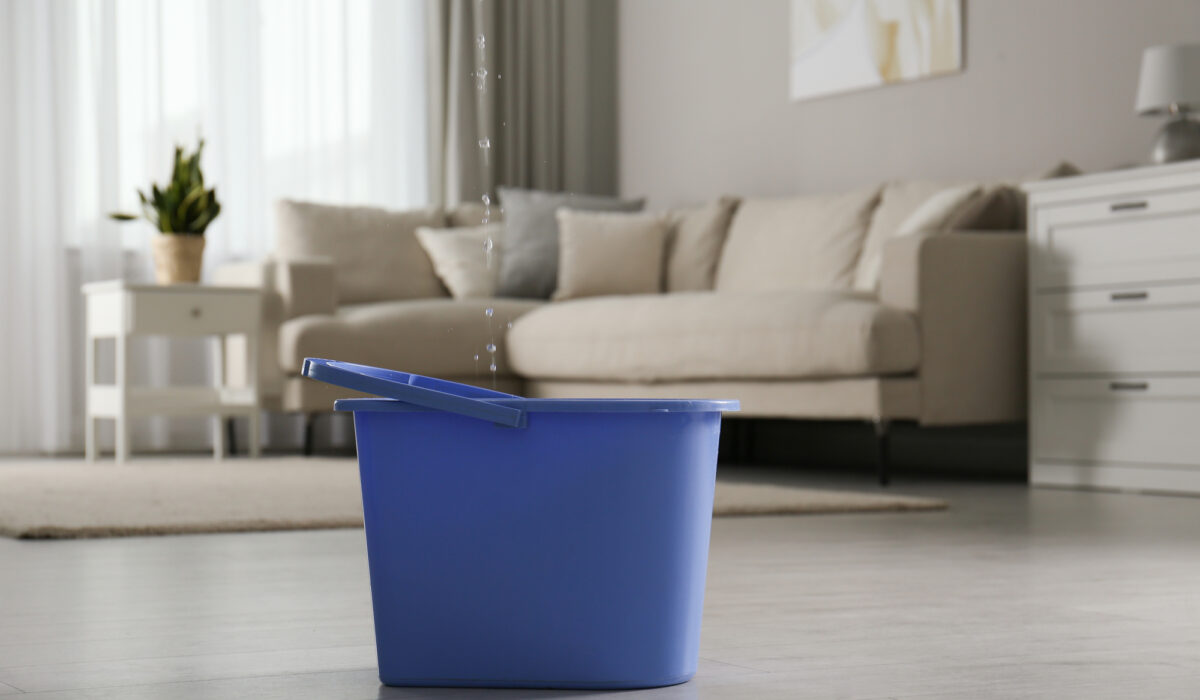What to Do When Your Roof Begins to Leak: A Homeowner’s Guide
A leaky roof can quickly turn from a minor inconvenience into a major headache if not addressed promptly. Water damage can compromise the structural integrity of your home, lead to mold growth, and ruin your belongings. Here’s a comprehensive guide to help you navigate the steps to take when your roof begins to leak.
Step 1: Stay Calm and Assess the Situation
Discovering a roof leak can be stressful, but staying calm is essential. Panicking can lead to hasty decisions that might worsen the situation. Take a deep breath and begin by assessing the extent of the leak.
Step 2: Identify the Leak Source
Finding the exact source of the leak is crucial. Water often travels along beams and rafters before dripping down, so the spot where water is entering your home might not be directly beneath the damaged area of the roof. Here’s how you can locate the source:
•Inspect the Attic: Using a flashlight, look for signs of water damage, mold, or damp insulation. Follow the water stains up to the highest point.
•Examine the Roof Exterior: If it’s safe to do so, check for missing, damaged, or curled shingles. Pay attention to areas around roof penetrations such as chimneys, vents, and skylights, as these are common leak sources.
Step 3: Contain the Water
While searching for the leak, it’s essential to minimize water damage inside your home. Here’s what you can do:
•Place Buckets or Containers: Put buckets or containers under the drip to catch the water.
•Protect Your Belongings: Move furniture, electronics, and valuables away from the leak. If moving them isn’t possible, cover them with plastic sheets or tarps.
•Relieve Ceiling Pressure: If water is pooling and causing your ceiling to bulge, use a screwdriver to carefully puncture the lowest point of the bulge. This controlled release will prevent the ceiling from collapsing and causing more extensive damage.
Step 4: Apply a Temporary Fix
Once you’ve identified the source, you can apply a temporary fix to prevent further damage until a professional can assess the situation. Here are a few options:
•Roofing Tape: Use roofing tape to cover small cracks or holes.
•Plastic Sheeting or Tarp: Secure a piece of plastic sheeting or a tarp over the damaged area using roofing nails or heavy-duty tape. Ensure it’s tightly secured to prevent water from seeping through.
Step 5: Document the Damage
Take detailed photos and videos of the damage, both inside and outside your home. This documentation will be invaluable when filing an insurance claim. Be sure to capture:
•The source of the leak.
•Water damage to walls, ceilings, and floors.
•Damaged personal property.
Step 6: Contact a Professional Roofer
Even if you manage to stop the leak temporarily, it’s crucial to have a professional roofing contractor assess and repair the damage. Experienced roofers can provide a permanent solution and inspect the rest of your roof for any other potential issues.
Step 7: Notify Your Insurance Company
Contact your homeowner’s insurance company as soon as possible to report the leak. They will guide you through the claims process and inform you about the coverage and documentation required. Depending on your policy, you might be reimbursed for repair costs, water damage, and even temporary lodging if necessary.
Step 8: Prevent Future Leaks
Once the immediate crisis is resolved, take steps to prevent future leaks. Regular maintenance is key to prolonging the life of your roof and avoiding unexpected problems. Here’s how to maintain your roof:
•Schedule Annual Inspections: Have a professional roofer inspect your roof annually to catch and address potential issues early.
•Clean Gutters and Downspouts: Ensure your gutters and downspouts are free of debris to facilitate proper water drainage.
•Trim Overhanging Branches: Cut back any tree branches that hang over your roof to prevent damage during storms.
Step 9: Consider Long-Term Solutions
If your roof is old or has extensive damage, it might be more cost-effective to replace it rather than making continuous repairs. Discuss your options with your roofing contractor to determine the best solution for your home and budget.
Conclusion
Dealing with a leaky roof can be daunting, but knowing what steps to take can make the process more manageable. By staying calm, identifying the source of the leak, containing the water, and seeking professional help, you can protect your home from further damage. Regular maintenance and preventative measures will ensure your roof remains in good condition, providing reliable protection for your home.
For expert advice and roofing services, contact Phoenix Roofing and Solar. Our team is dedicated to helping you maintain a safe and secure home with top-quality roofing solutions.

